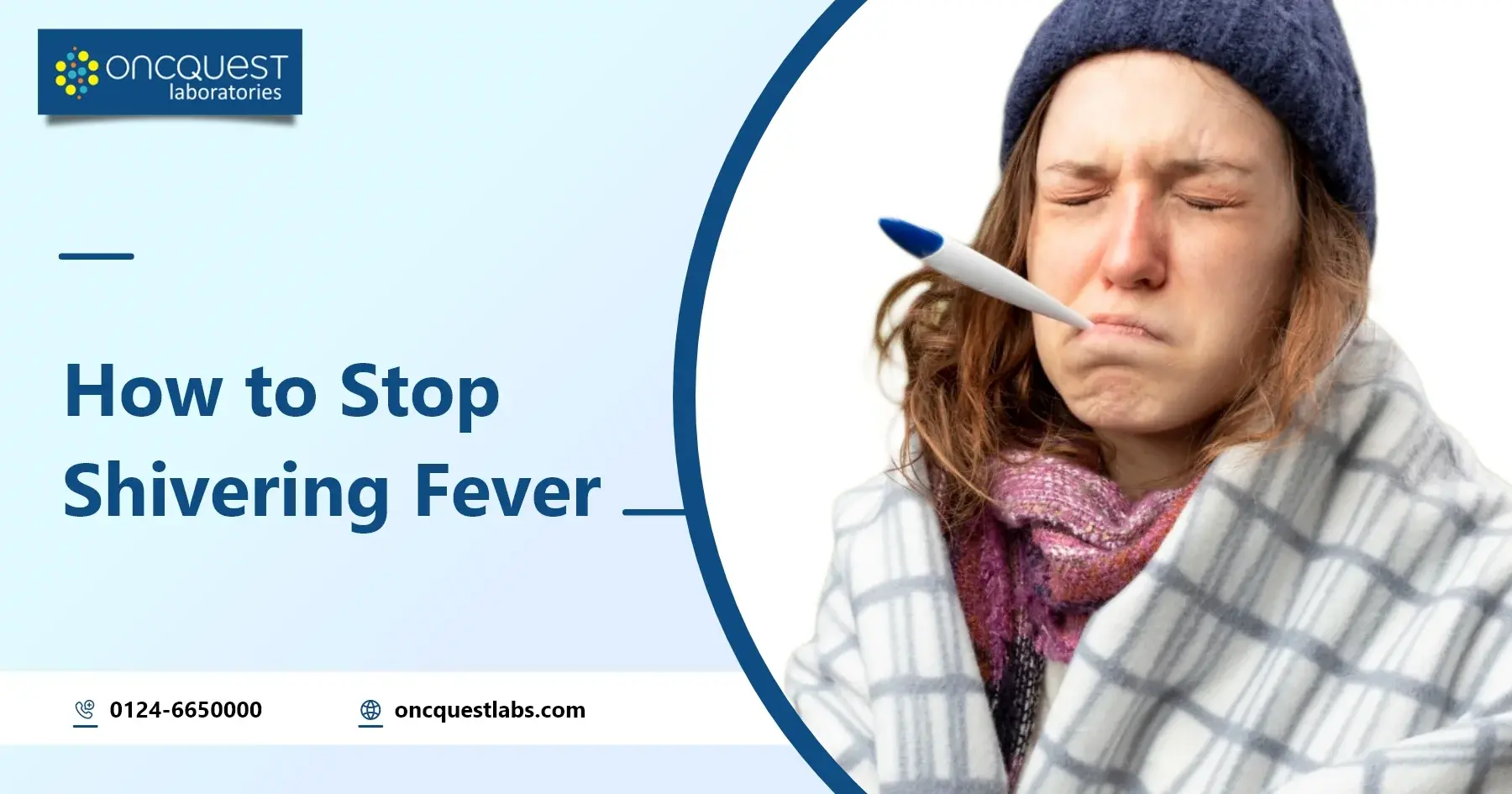The frame frequently employs a fever and chills as a defense device against disease. Your resistant framework raises your frame temperature inside the middle while it acknowledges a disorder via sending chemical alerts to the brain. Your frame will start to tremble in an endeavor to create a warm temperature in reaction to the reset “indoor regulator.”
In positive cases, such as bacterial meningitis or COVID-19, chills and frame pains can also appear in the absence of a fever. This happens while the hypothalamus, a locale of the brain that directs body temperature, is affected by a sickness or bacteria.
This article will make clear why fever and chills can occur at the same time or independently. You may also find out how to analyze and oversee fever and chills at home, as well as when to look for healing treatment.
Contents
Symptoms of Shivering Fever
It suggests your body is fighting an illness when you feel very exhausted and have a fever and chills. Further issues might include the following, depending on what’s producing it and where it is:
- Cerebral pain
- Sore throat
- Pain in your muscles and body
- Tiredness
- Stuffy or runny nose
- Stomach pain
- Appetite misfortune
- Queasiness
- Unsteady bowel movements
These side effects can help identify possible causes and the location of the disease inside your body. It might be wise to consult an expert if you have one.
Causes of Shivering Fever
- Causes: The agents that cause fever, known as pyrogens, can be either pathogens (such as infections) or the toxins that pathogens carry (such as bacteria). Prostaglandins, which are volatile chemicals, are released from the tissue at the illness site when pyrogens are present. Body temperature is increased by prostaglandins, which signal the hypothalamus, the base of the brain.
- Fever Edge: A temperature of more than 100.3°F is universally regarded as feverish.
- Normal Body Temperature: Adults and older kids typically have a body temperature of around 98.6°F. It is between 96.8 and 100.3°F for younger children and infants.
Chills and Their Causes:
- Definition of a chill: Feeling of coolness that frequently coexists with a high temperature but can also occur on its own.
- Reasons for chills: They arise when the core body temperature drops below what the hypothalamus deems normal. Shivering is a typical response that generates heat.
- Prostaglandins and Fever: When prostaglandins cause the hypothalamic indoor regulator to be reset, the body experiences a chill until the desired temperature is attained. This is known as chills with fever.
- Timing of Chills: Often, chills appear during the onset of infections, such as the flu.
A fever and chills while ill:
- Chills without a temperature: A number of illnesses, such as COVID-19, can induce chills and body throbs without a temperature.
- COVID-19 and Chills: Long-term COVID, gastrointestinal symptoms, and Guillain-Barré syndrome (GBS) are all associated with chills without temperature. The resistive reaction might be less severe, affecting nerves and potentially causing a brief drop in body temperature.
- Bacterial diseases and chills: Some bacterial infections, such as Lyme disease, bacterial meningitis, and jungle fever, can produce bacterial toxins that result in chills without fever.
Non-Infectious Causes of Chills:
Chills can also occur in the absence of an illness for non-infectious reasons, including iron deficiency, hypoglycemia, hypothyroidism, leukemia, blood cancer, poor health, and psychological factors including anxiety or post-traumatic stress disorder.
How to Treat a Fever and Chills
- Pharmaceutical: Utilize over-the-counter solutions such as Motrin (Ibuprofen) or Tylenol, which is acetaminophen, to decrease fever. Try not to give up if it takes a while for the fever to subside.
- Temperature Control: Keep a secure container separate from anything large or cover-like. Take care to warm up, but do not overcompensate. Evacuate the covers as before, as long as it’s comfortable to dodge overheating.
- Hydration: Expend a plenitude of straightforward fluids, fundamentally water. Whereas tea may be soothing, keep liquor at a vital distance.
- Wipe Showering: To offer assistance and diminish the water’s temperature, touch your skin onto a cloth plunged in tepid water (inexactly 70 degrees Fahrenheit). Avoid contact with cold water, as it may cause chills and increase fever.
- Rest: Make sure, beyond any doubt, you get sufficient rest to permit the body to mend. Pay consideration to your body and keep a secure distance from physically requesting activities.
- Checking: Pay consideration to your body’s temperature and any caution signs. Talk with a therapeutic master if the temperature continues or gets worse.
Recall that you might not require quick therapeutic consideration and can oversee your fever at home if it is 102 degrees F or lower and there are no serious indications. If you’re not beyond any doubt about yourself or if the circumstance continues, never stop looking for treatment support.
Home Remedies to Stop Shivering Fever
- The body frequently responds to fever by Shivering, which is its defense instrument against contamination. Whereas certain cures may offer assistance in reducing side impacts, it is vital to talk with a healthcare professional for precise advice.
- Drinking fluids makes a difference in avoiding lack of hydration, fortifying the body’s protections, and regulating body temperature.
- A sound rest plan is basic for the body to mend. Your secure establishment capacity is superior when you get sufficient sleep.
- Applying a cool, moist cloth to your wrists or forehead may offer assistance by gently cooling your body.
- A warm shower can give consolation and offer assistance, diminishing fever. Maintain a strategic distance from utilizing cold water as much as conceivable since it might cause shivering.
- You can effectively control your body temperature by wearing light layers. As required to remain comfortable, evacuate or include layers.
Recall that these recommendations are standard and may not be appropriate for all people. Look for remedial advice for a sensible conclusion and treatment if your fever continues or gets to be more awful.
Frequently asked Questions
Q1: How do you get rid of shivers fast?
A1: Drink plenty of water. Contact your doctor and take proper medication. Wear comfortable clothes and put on cloth that is dapped in lukewarm water.
Q2: How can I reduce fever and shivering at home?
A2: Take a bath in lukewarm water. Take rest, as your body needs it. Eat healthy food and contact a healthcare professional.
Q3: How do I stop shivering during a fever?
Q3: Lie down on the bed and drape yourself comfortably with a warm blanket. Make sure you do not get suffocated. Remain hydrated and stable in a positive and warm environment.





